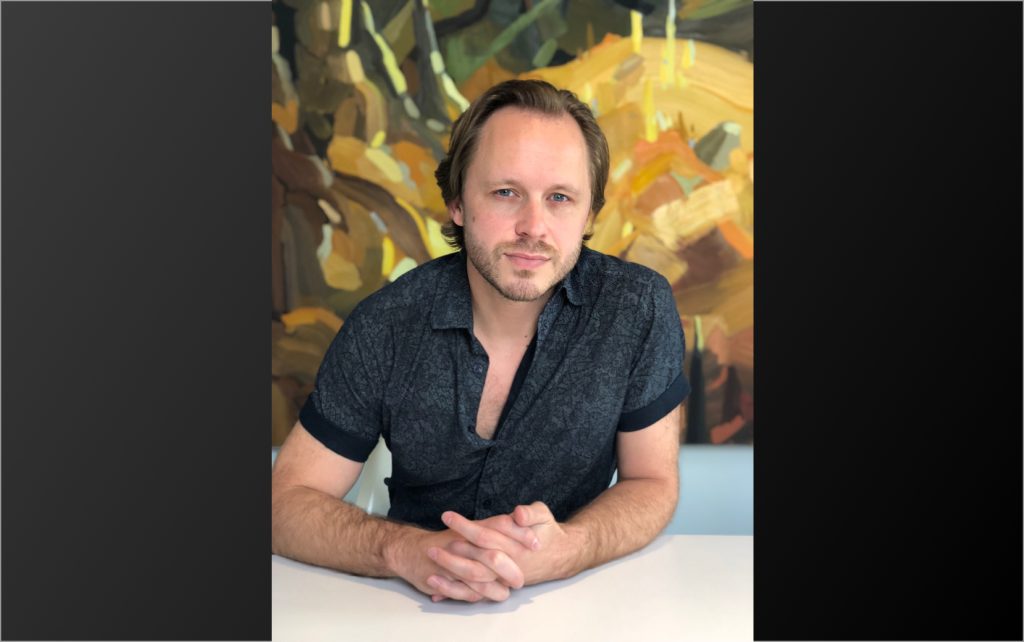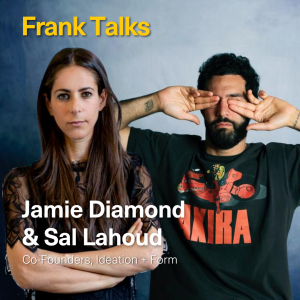In this Frank Talk we sit down with Ryan Leahey, who is Director of Digital Content at Bower Blue. Ryan produces videos, podcasts and social-media strategies for galleries, museums and architecture firms. Previously, he was a writer and editor, with stints at Artsy and Kirkus Reviews. He also moonlights as senior editor of Gayletter magazine, a print publication about art, fashion and identity. We are super excited to bring you Ryan’s Frank Talk below – please enjoy the read!
What was your first job in the Arts?
My first job in the cultural space was as a book reviewer, then editor, at Kirkus Reviews. We reviewed thousands of novels, memoirs and unhinged manuscripts, but the occasional art book would cross my transom and stop me in my tracks. Seeing art in print paired with narrative essays was, for me, the big door opening onto the art world.
What was the most useful or important thing you learned at that job?
I learned to appreciate that there are unfathomable quantities (and qualities) of things being created all the time, by all sorts of people. I think that’s why now when I see something that sticks out, I try to understand why.
Tell us a little more about yourself. When did you realize you wanted to pursue a career in this industry?
As a kid, my family joked about how I was constantly drawing wild lines and shapes in the air with my finger. (It made sense to me.) Even before I studied art or thought of it as an industry, my brain clicked when I thought about lines, composition, balance, color—aesthetics in general. At Kirkus, I saw how aesthetics could pair with narratives, context and storytelling. The artists I talk to usually have an obsession with making things; I have an obsession with trying to understand and explain it. Now I’m lucky enough to get the artists to explain it for me.
What do you do now?
What do you do now? At Bower Blue, I produce videos and podcasts and advise on social media for galleries, museums, foundations, studios and architecture firms. That includes Acquavella Galleries, Friedman Benda, Galerie Lelong & Co., Two Palms, El Museo del Barrio, MAP Architects, The LGBT Community Center, among others. I also moonlight as senior editor of Gayletter magazine, a print publication about art, fashion and identity.
Where are you from?
I grew up outside Washington, D.C., on the Maryland side, and have lived in New York for about 10 years.
What is the arts community like there?
In the New York art world there are personalities of all kinds, but, really, you could say that about most industries; there are just more artist profiles written here. Despite the romanticized idea of a solitary, uncompromising artist, most of the artists I work with are disarmingly kind and collaborative.
Has where you come from shaped what you do in the arts today?
Growing up, Washington, D.C., was the closest cultural hub. The first art I remember seeing was the huge Alexander Calder mobile dangling from the ceiling of the National Gallery of Art. That and the East Building itself, designed by I.M. Pei. I remember touching the sharp corner outside—wanting to touch architecture.
The National Gallery of Art is a free museum, open to all. I think that instilled in me the idea that there’s something democratic and open about art. It’s meant to be a conversation for everyone. And when you’re on your way to and from the National Gallery, you pass by all the other museums and monuments dedicated to science, history, government, etc. Art was—and, for me, still is—one thread in the larger cultural fabric.
What is the best piece of advice you can give about working in the art world?
I think you need to be realistic—to understand what’s expected, what’s “normal,” how trends are formed and what’s in line with how the art world currently works. From there, you can decide if you have the mettle to push forward and do what’s unexpected, because that can be a lot of fun.
What is one of your greatest accomplishments in your career so far?
I try to consider success and accomplishments on aggregate—that seems like a healthier, more sustainable outlook. So, in the big picture, I’m proud of having contributed ideas and work to each silo: print editorial, digital editorial, video and podcasts. I don’t meet too many people who have done each (and enjoyed it).
What has been a challenge for you?
Trying to balance newness and progressiveness with the realities of an industry that doesn’t like to change quickly.
What is something you do every day at work?
I try to read national and local art/design news and the general news every day. Timeliness and relevance are essential parts of the work we produce.
What is one of the weirdest things you have had to do on the job in your career?
Last summer we had an outdoor shoot and got caught in a torrential downpour. An absolute monsoon. Fortunately, the second half of the shoot—a sit-down interview with the artist—was indoors. But since all our clothing was soaked through, we had to disrobe to dry out. I conducted the interview in my underwear. Still trying to understand if that made it better or worse.
What defines a good employee? What defines a good boss?
A good employee can anticipate a boss’s questions and criticism, and build that knowledge into the work. A good boss makes an employee want to be better, not out of fear, but out of the feeling that what the company is doing actually has purpose.
What do you think makes a person hirable?
I’m looking to believe a new hire could do exactly what’s needed, but, even better, they could do it in a way I myself couldn’t imagine. I want to learn, too.
What is your advice to making yourself stand out in your workplace?
Understand the problem—the exact reason you were hired in the first place—and make solving it your priority. Get it done quickly enough so you have time to help solve other problems, too. Ideally with a sense of humor and optimism.
What are things you can do proactively boost your CV?
I like to see active side projects and hobbies taken seriously. Lessons learned in a passion project are often the easiest to remember.
Are there any tips you can give people entering the workforce?
More likely than not, your career path will take an uncountable number of twists and turns. So don’t be discouraged or surprised when things change for the better and/or worse. Appreciate adapting.
In your experience, what are things to do and things to avoid during an interview?
Bring your own coffee. It adds an aura, real and perceived, of casualness and self-reliance. However, avoid spilling your own coffee.
Any other anecdotes about your experience in the art world that you would like to share?
I might have to save them for the memoir.
What is the best exhibition you have seen in the last year?
Lucian Freud at Acquavella Galleries; Alvin Baltrop at the Bronx Museum.
If you could own a work by 5 different artists, who would be in your collection?
Agnes Martin, Frank Stella, Michelle Stuart, Lucian Freud and a piece from each of my friends, which currently bring me more joy, if less liquidity.




